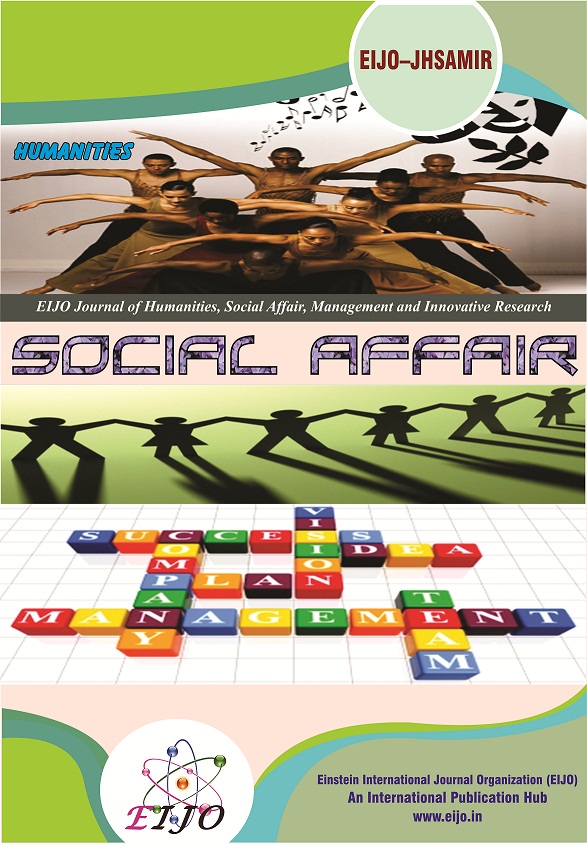JOURNALS || EIJO Journal of Humanities, Social Affair, Management and Innovative Research (EIJO – JHSAMIR) [ ISSN : 2455 - 927X ]
ABSTRACT
In This article we are represented, the social structure refers to the pattern of social relationships in a society. Such structure regulates the interactions among members of the society, providing guidelines within the cultural norms for achieving the goals defined by culture values. Social structure is the institutional framework that makes for order in repetitive, rhythmic whether daily, weekly, or yearly interactions among people. The people attach emotional importance to these norms. The institutions and associations are inter-related according to these norms. The specific meaning of social change depends first on the social entity considered. Changes in a small group may be important on the level of that group itself but negligible on the level of the larger society.
Keywords: Social, Society, Structure, Culture, Cast, Communities, Life, Environment, Influence.
[1]. Burton, John W. 2006. Conflict Resolution.
[2]. Scott, J. (2005) Sociology and its Others: Reflections on Disciplinary Specialization and Fragmentation. Sociological Research On Line 10 (1).
[3]. Sayer, A. (2000) For Postdisciplinary Studies: Sociology and the Curse of Disciplinary Parochialism and Imperialism. In: Eldridge, J. et al. (Eds.), For Sociology. Sociology Press, Durham.
[4]. Fuller, S. (2006) The New Sociological Imagination. Sage, London.
[5]. Callon, M. "Society in the Making: The Study of Technology as a tool for Sociological Analysis" in: The Social Construction of Technological Systems.
[6]. Durkheim, E. 1997. Uber soziale Arbeitsteilung : Studien uber die Organisation hoherer Gesselschaften, 2, Auglage , Frankfurt a. M.
[7]. Goldsmith, E. 2007. "The Family Basis of Social Structure" in The Stable Society. Ch. 2, The Wadebridge Press.
[8]. Keohane, Robert & Joseph Nye. 2000. Power and Independence. 3rd edition. Longman. ISBN 0321048571.
[9]. Levi-Strauss, Claude. 2008. Structural Anthropology, publ. Allen Lane, The Penguin Press. ISBN 046509516X.
[10]. Maiese , M. 2000. Social Structural Change.
[11]. Calhoun, C. (2005) The Promise of Public Sociology. British Journal of Sociology 56(3): 355 63.
[12]. Parsons, Talcott. 1951. The Social System. Glencoe: The Free Press. ISBN 0029248000.
[13]. Radcliffe-Brown, Reginald. 1952. Structure and Function in Primitive Society. New York: The Free Press. ISBN 0029256208.
[14]. Turner, Victor W. 2010. Dramas, Fields, and Metaphors: Symbolic Action in Human Society (Symbol, Myth, & Ritual). Cornell, NY: Cornell University Press. ISBN 0801491517.



